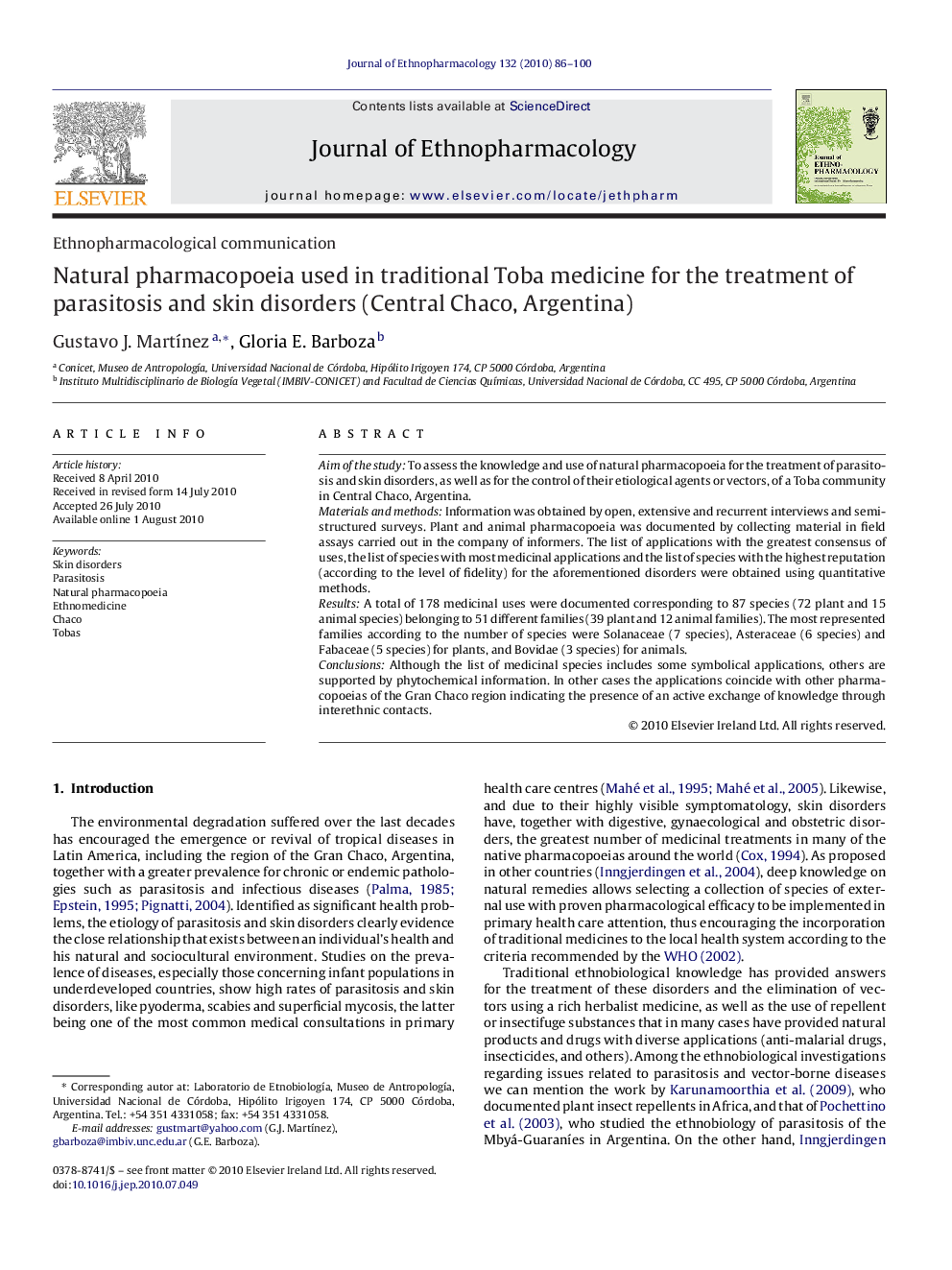| Article ID | Journal | Published Year | Pages | File Type |
|---|---|---|---|---|
| 2545652 | Journal of Ethnopharmacology | 2010 | 15 Pages |
Aim of the studyTo assess the knowledge and use of natural pharmacopoeia for the treatment of parasitosis and skin disorders, as well as for the control of their etiological agents or vectors, of a Toba community in Central Chaco, Argentina.Materials and methodsInformation was obtained by open, extensive and recurrent interviews and semi-structured surveys. Plant and animal pharmacopoeia was documented by collecting material in field assays carried out in the company of informers. The list of applications with the greatest consensus of uses, the list of species with most medicinal applications and the list of species with the highest reputation (according to the level of fidelity) for the aforementioned disorders were obtained using quantitative methods.ResultsA total of 178 medicinal uses were documented corresponding to 87 species (72 plant and 15 animal species) belonging to 51 different families (39 plant and 12 animal families). The most represented families according to the number of species were Solanaceae (7 species), Asteraceae (6 species) and Fabaceae (5 species) for plants, and Bovidae (3 species) for animals.ConclusionsAlthough the list of medicinal species includes some symbolical applications, others are supported by phytochemical information. In other cases the applications coincide with other pharmacopoeias of the Gran Chaco region indicating the presence of an active exchange of knowledge through interethnic contacts.
Graphical abstractThe figure presents some of the remedies with great reputation for its use in skin disorders in an aboriginal community in Central Chaco, Argentina: Capparis tweediana (Capparaceae), Anodontites trapesialis (Unionidae) and several animal fats.Figure optionsDownload full-size imageDownload as PowerPoint slide
